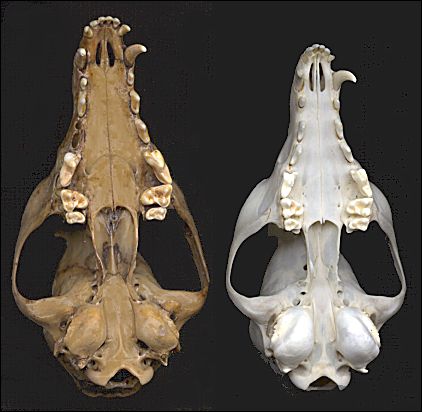

You only have to look around you to know that there's a lot of variation in El Pasoans. Examine closely any kind of animal, and you'll see pretty much the same thing. Admittedly, we aren't as fine tuned in picking up differences among other critters as within our own kind, but the variations are there.
There's another kind, though. Naturalists call this geographic
variation, because populations of a species often show average differences as you
travel from place to place. The Chihuahuan Desert's Kit Fox, for example, is well
adapted to the arid climate, with a relatively small body size and large ears. As you
leave the desert and enter the Great Plains, body size increases and ear size
decreases. The differences are sufficient that the populations were considered separate
species until recently. Now they are recognized as subspecies—but unfortunately,
subspecies have no universally accepted definition. Just looking at the name,
there's no way to know whether differences are minute or, as with the foxes, as
much as we sometimes see between separate species.

Contributor: Arthur H. Harris, Laboratory for Environmental Biology, Centennial Museum, University of Texas at El Paso.
Desert Diary is a joint production of the Centennial Museum and KTEP National Public Radio at the University of Texas at El Paso.

The fossil skull on the left is of a Swift Fox, representative of the Southern Plains subspecies. The modern skull on the right is of the Desert Kit Fox. Note the overall size difference and, particularly, the difference in size of the auditory bullae (the hemispherical structures toward the back of the skull that surround the middle ears). Kit foxes, like many desert animals, tend to have larger bullae than relatives in moister habitats.
As sometimes occurs with very closely related populations, there is some question as to the actual taxonomic relationship of these two taxa. Thus within recent years some biologists have recognized them as subspecies, whereas others have recognized them as separate species.
Dragoo, J. W., J. R. Choate, T. L. Yates, and T. P. O'Farrell. 1990. Evolutionary and taxonomic relationships among North American arid-land foxes. Journal of Mammalogy 71(3):318-332.
Endler, J. A. 1977. Geographic Variation, Speciation and Clines. Princeton University Press, Princeton. 262 pp.